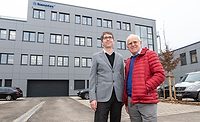Space Provides New Frontier for HIPIMS Research

SHEFFIELD, UK - Space satellites will be launched on a mission to observe worlds beyond the known solar system thanks to new plasma developed in the labs at Sheffield Hallam University, Sheffield, UK.
Experts have developed a new coating for space satellite cryocoolers - the specialist devices that regulate satellite temperature and enable them to function in space.
The university has been working with the Space Science Technology Department of Rutherford Appleton Laboratory (RAL) after finding that the component coatings created by the university team are better at maintaining the optimum temperature of satellite systems on missions to observe the solar system and beyond. They will now be used in a space observatory to help characterize the physics and chemistry of planetary atmospheres beyond the known solar system.
Dr Martin Crook from RAL said, “Cryocoolers are a key enabling technology for space-based science and astronomy, and Rutherford Appleton Laboratory are world leaders in this technology.
"For some years, we have been aware of the potential for rare-earth coatings to enhance the performance of our coolers, but despite numerous attempts were not able to implement a flight-worthy solution.
"Now, Sheffield Hallam has developed an excellent coating suitable for a flight qualification program.
"Directly through that work, our Stirling cycle cryocooler has demonstrated a clear advantage over other technologies at this temperature and is the first choice for scientists currently entering instrument proposals for forthcoming missions such as EChO, a space-based observatory to characterize the physics and chemistry of exoplanet atmospheres.”
Professor Arutiun Ehiasarian and his team at the University's Nanotechnology Centre for Plasma Vapour Deposition have developed a new coating technology called High Power Impulse Magnetron Sputtering (HIPIMS) for the deposition of very dense and highly adherent metal and ceramic materials.
The team is a world leader in HIPIMS technology and has developed new applications for space, manufacturing, automotive, semiconductor and photovoltaic sectors.
Looking for a reprint of this article?
From high-res PDFs to custom plaques, order your copy today!








